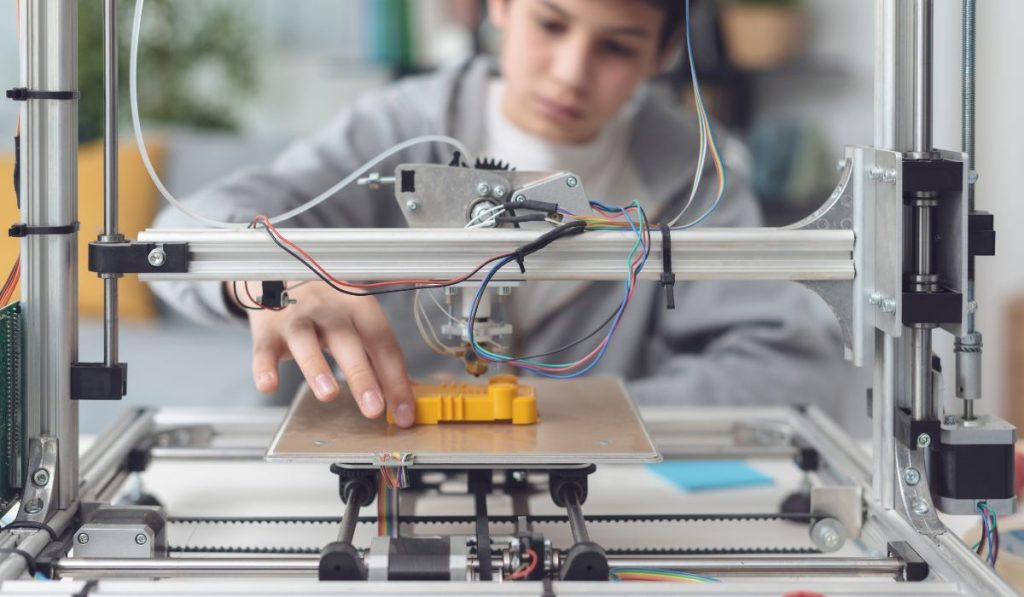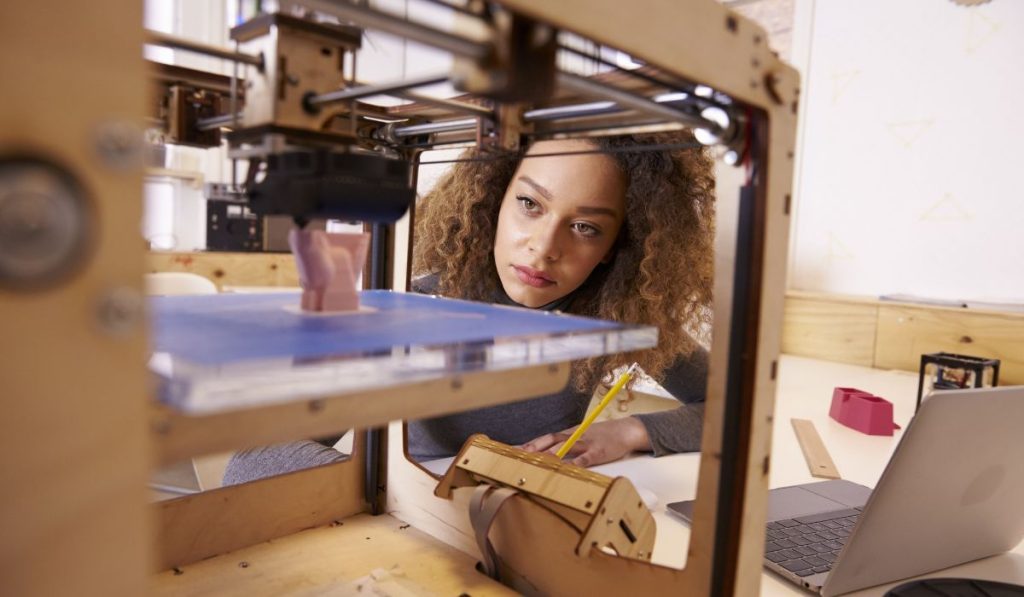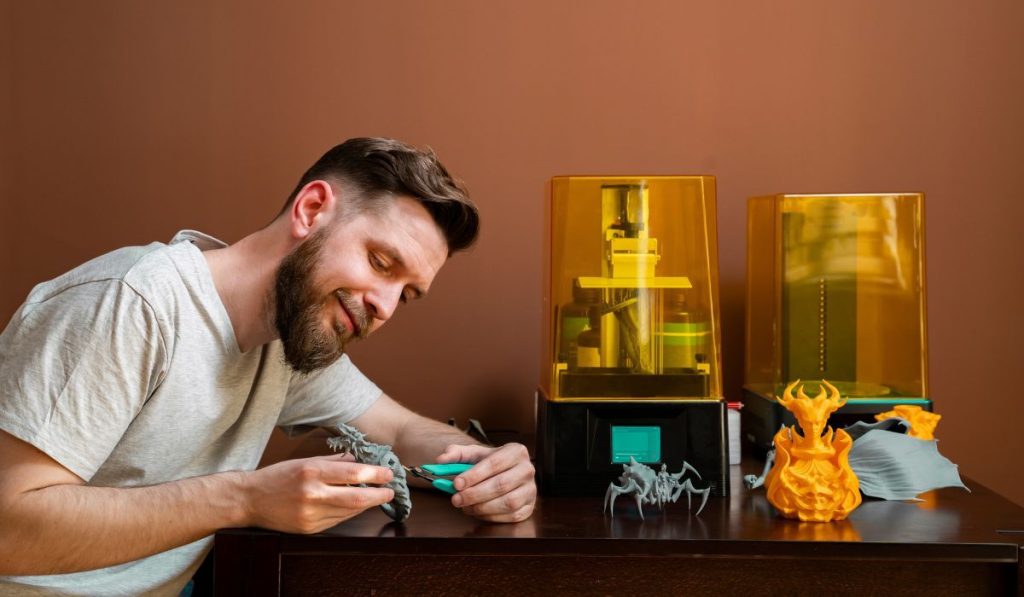Our Quick Guide to Buying a 3D Printer
When 3D printers were first introduced, it sparked a worldwide phenomenon for the endless possibilities in items you could create.
From 3D printed prosthetics to miniatures and other collectibles, 3D printers became all the rage except that it had one drawback – they were far too expensive for home use.
Today, however, many more 3D printers have become increasingly affordable, so everyone could bring one home to kickstart a new 3D printing hobby.
But if you’re new to this industry, how will you know where to begin with this 3D hobby? In this article, we’ll share some tips on how to pick the ideal 3D printers for home use.
Best Budget 3D Printer
No products found.
Most Popular Online
- Quick change nozzle: unlike other 3D printers, which require tools and 20-40 minutes of work to replace the nozzle, The voxel has a quick change nozzle that allows you to change the nozzle in seconds, without the need for tools of any kind
- Heated, flexible, and removable: The removable, flexible build plate makes removing a model A breeze. Simply remove and flex it to dislodge the model. You can easily replace it if it becomes damaged or can swap in a second build plate to start a new print immediately after completion of a project. Additionally, it can be heated to temperatures up to 60°c
Highest Rated
- Countless hours of high quality printing with the most reliable low-cost 3D printer
- Quickly and easily make your 1st print out of the box with completely pre-assembled printer, included 0.5 kilogram spool of filament and clear setup instructions. Maximum build depth (inches): 9
- Far superior safety compared to competition with fully enclosed design, non-heated build plate, PLA-only printing and 3rd party UL safety approval
3D Printers Buyers Guide
What is the ideal size of a 3D printer for home use?
There are a variety of 3D printers in the market for home use today, allowing for unlimited creative play. For beginners, it’s recommended to purchase a printer with a minimum size of 5” x 5” x 5”.
This should ensure that your 3D printer has enough space for your printed parts and a base that can support most 3D projects that can be done from home.
How much are 3D printers for home use?

Depending on the brand you’re looking to buy, 3D printers for home use can cost between $100 to $1,000. Do bear in mind that cheaper 3D printers may not always mean they’re good quality 3D printers, so it’s always best to pick a unit in a mid-range price point.
Most 3D printers also sell materials separately, so if you’re working with a limited budget to kickstart your 3D printing hobby, then this is something you’ll have to keep in mind.
What materials do 3D printers use?
Many experienced hobbyists often recommend the use of either Polylactic Acid (PLA) or Acrylonitrile Butadiene Styrene (ABS).
Both materials would usually retail between $30 to $50 per spool of 2.2lbs and come in a variety of colors to suit your 3D printing project. Let’s look at how these two materials differ from one another.
Polylactic Acid (PLA) is a material that’s made of corn starch and is the go-to material for most beginners. PLAs are biodegradable and cools quickly after printing but may not be suitable for large projects that require joints.
Acrylonitrile Butadiene Styrene (ABS), on the other hand, is made of petroleum plastic and is a top pick for most 3D printing hobbyists.
Because of the strength and durability of ABS plastic, this is the recommended material to go for if you’re looking to print large projects that are sturdier and will not deform under high heat.
Do you need a computer to run a 3D printer at home?

Most 3D printers will require a computer to read the STL files – a file with your 3D model inside. The good news, however, is that you don’t need a high-end computer to run a 3D printer.
Any basic desktop or laptop should be able to handle and process STL files.
Depending on the model of your 3D printer, you may even be able to print using an SD card with your files saved inside.
This is a great backup in case your computer malfunctions or when you’re doing small print jobs from home.
Thinking of starting a new hobby? Read our Complete Guide to 3D Printing as a Hobby Here!
Types of 3D printers that are suitable for home use
While there are a variety of 3D printer types that you can choose from, the recommended units for home use are Fused Deposition Modeling (FDM), Stereolithography (SLA), or Selective Laser Sintering (SLS) 3D printers.
Each of these printers is known to be easy to use, are relatively affordable to buy, and can create intricate or semi-large 3D printing projects.
Is it expensive to use 3D printers at home?

A huge concern of using a 3D printer at home as a hobby is the cost that comes along with it. On average, running a 3D printer at home can cost you between $4 to $12 a day.
This includes electricity costs, materials, and other operational costs to keep the 3D printer from running.
Accessories to consider when buying a 3D printer for home use
Beyond owning a 3D printer, you’ll also want to invest in several accessories to fuel your new hobby. Some recommended accessories include storage containers to keep your unused printing materials and a nozzle cleaning kit to clean out your printer nozzles.
You should also invest in a 3D printer enclosure to keep the temperature around your project consistent, which helps avoid issues like a warped printed object or cause errors during the printing process.




